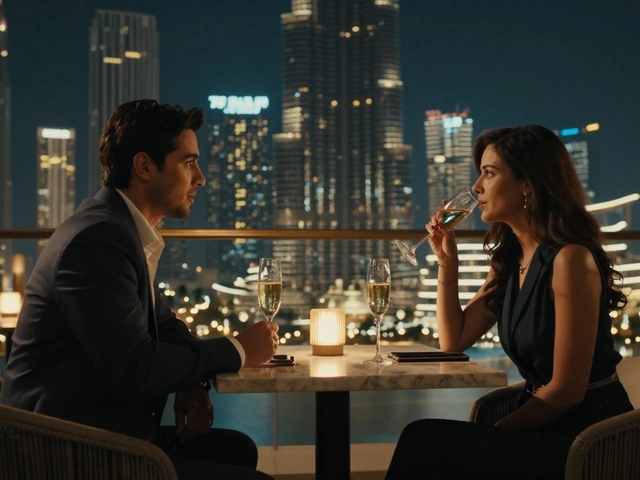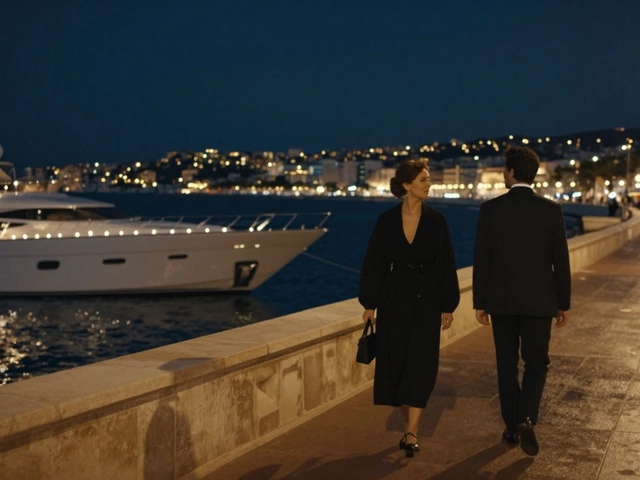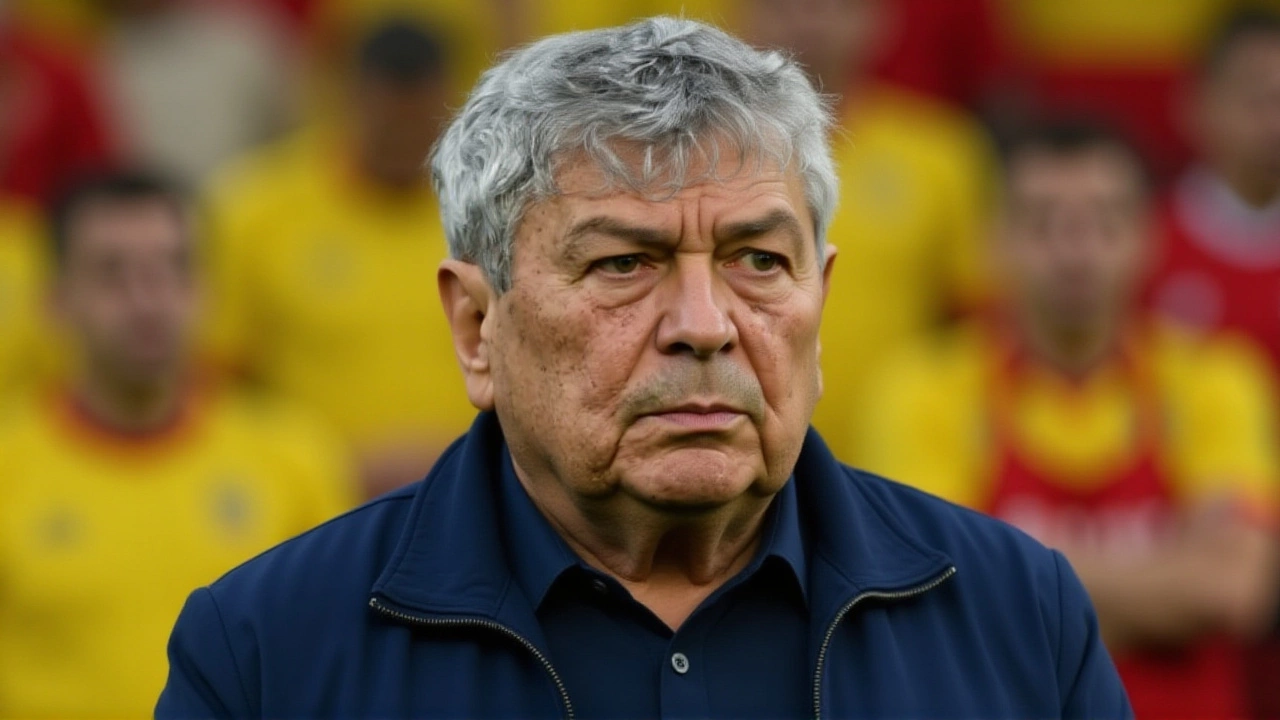When the final whistle blew at Stadionul Ilie Oană in Ploiesti on Tuesday, November 18, 2025, Romania’s players didn’t celebrate just a win—they celebrated survival. A 7-1 thrashing of San Marino wasn’t just about pride; it was the final act in a grueling 2026 FIFA World Cup European Qualifying campaign that left Romania third in Group H with 13 points—and a lifeline to the UEFA Nations League play-offs. San Marino? They remained winless, their World Cup qualifier losing streak now at 61 straight games since 2001.
Early Shock, Then Total Domination
It started with a nightmare. In the second minute, under a torrential downpour, Nicolas Giacopetti pounced on a deflected pass from Matteo Valli Casadei and slotted past Romanian keeper Ștefan Târnovanu. The tiny republic of San Marino—population 33,600—had done the unthinkable: scored first against a team 570 times their size.
But the shock didn’t last. Romania responded like a storm breaking. By the 29th minute, Stefan Baiaram equalized with a low finish off a crisp assist from Florin Tănase. Then came the avalanche: goals at 41’, 42’, 57’, 76’, and 82’. The 57th-minute own goal by Giacomo Valentini was just the beginning of the carnage. Ianis Hagi, son of the legendary Gheorghe Hagi, added a curler in the 76th, followed by Andrei Rațiu’s clinical strike two minutes later. Dennis Man and Louis Munteanu completed the rout. The final scoreline—7-1—wasn’t just a result. It was a statement.
Group H Final Standings: A Tale of Two Worlds
When the dust settled, Austria topped Group H with 19 points, followed by Bosnia and Herzegovina on 17. Romania, despite finishing third, secured their play-off berth—not because of their World Cup qualifying group position, but because of their strong run in the 2024-25 UEFA Nations League. Cyprus (8 points) finished fourth, while San Marino? They ended with 0 points, 8 losses, and a staggering 39 goals conceded—the worst defensive record in all of European qualifying.
San Marino’s lone goal in the entire campaign? That early strike by Giacopetti. Their total shots on target across eight matches? Averaging less than one per game. They didn’t just lose—they were outclassed in every phase. Romania, meanwhile, finished with a 4-1-3 record, +9 goal difference, and a squad that looked increasingly cohesive under their unnamed manager, who’s now overseen nine wins in 13 competitive matches.
The Human Side: A Microstate’s Fight and a Nation’s Hope
San Marino’s players aren’t professionals in the traditional sense. Many hold day jobs—teachers, electricians, mechanics. They train evenings after work. Their stadium holds 7,000, half the size of Romania’s modest Stadionul Ilie Oană. Yet, they showed heart. Giacopetti’s goal was more than a goal—it was a moment of global recognition for a nation that has never qualified for a major tournament.
For Romania, this was redemption. After a shaky start to the qualifiers, including a 2-1 loss to Cyprus and a draw with Bosnia, they found their rhythm. Midfielder Nicușor Bancu was the engine, providing three assists across the campaign. Defender Alexandru Chipciu anchored the backline, while substitutes like Ciprian Petrila and Ianis Hagi injected fresh energy in the final 30 minutes.
What Comes Next?
Romania will now enter the UEFA Nations League play-offs in March 2026, where they’ll face another third-place finisher from a different league. The draw is still pending, but a path to the 2026 World Cup in North America remains alive. They won’t be favorites—but they’ve proven they can win big when it counts.
San Marino? They’ll return to friendlies and youth development. Their next competitive match? The 2028 European Championship qualifiers. They’ve got nothing to lose—and everything to prove.
Behind the Numbers
- Romania’s 7-1 win was the largest margin of victory in Group H—and among the top five in all European qualifying.
- San Marino’s 61-game losing streak in World Cup qualifiers is the longest in international football history.
- They’ve scored just 1 goal in 8 qualifiers; Romania scored 21.
- Only 1,500 fans attended the match in Ploiesti, but the result echoed across Europe’s footballing landscape.
- Betting odds had Romania at -9091 to win, meaning a $9,091 bet would net $9,191. The outcome? No surprise. The scale? Still shocking.
Frequently Asked Questions
How did Romania qualify for the play-offs despite finishing third in their group?
Romania didn’t rely solely on World Cup qualifying points. Their third-place finish in Group H was enough because UEFA awards play-off spots based on Nations League performance. Romania’s strong 2024-25 Nations League campaign—where they topped their league—earned them a direct entry into the Nations League play-off path, bypassing the need to finish top two in their World Cup group.
Why is San Marino’s 61-game losing streak significant?
It’s the longest consecutive losing streak in international football history, dating back to 2001. No other national team has gone so long without a win in World Cup or Euro qualifiers. San Marino’s average of 0.8 shots on target per game highlights the structural challenges faced by microstates in global football.
Who scored the goals for Romania in the 7-1 win?
Romania’s goals came from Stefan Baiaram (29'), Giacomo Valentini (own goal, 57'), Ianis Hagi (76'), Andrei Rațiu (82'), and two additional goals at 41' and 42' from Dante Carlos Rossi and Louis Munteanu. Dennis Man was also on the scoresheet before being substituted. The team’s attacking depth was on full display, with six different goal contributors.
What impact does this result have on Romania’s World Cup chances?
Romania’s 7-1 win doesn’t guarantee a World Cup spot, but it keeps their dream alive. They now enter the Nations League play-offs in March 2026, where they’ll face one of the other third-place teams from the Nations League. Winning two more matches could send them to the 2026 World Cup in the U.S., Canada, and Mexico—a possibility that felt remote before this dominant performance.
Is this Romania’s best World Cup qualifying performance in recent years?
It’s one of their most consistent campaigns since 2018. They’ve reached the play-offs three times since 2002, but never with such a clear attacking identity. This team, led by a new generation including Hagi and Man, showed more cohesion than the 2016 or 2020 squads. With proper development, they could break their 36-year World Cup drought.
What does this mean for San Marino’s future in football?
San Marino’s federation is investing more in youth academies and technical staff, but progress is slow. Their next hope lies in the 2028 Euro qualifiers, where they’ll face stronger competition. While qualification remains unlikely, every goal and every competitive match helps build legitimacy. Their resilience, not results, is their legacy.


